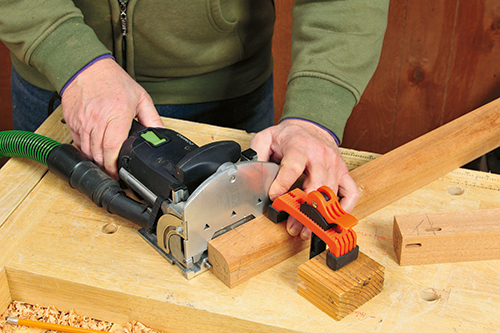
I was reviewing an article on the Festool Domino joiner system and the author recommended reinforcing tongue-and-groove joints for the rail and stiles of a small cabinet door with a Domino, specifically at the corners of doors. Although the Festool made it a snap for him to complete, the thought occurred to me: is this really necessary? With all the surface area that can be glued at this joint you would think it not necessary for any further reinforcement. If this is important, can you recommend other techniques to get similar (albeit more time-consuming and difficult) results? Would panels, say perhaps for the side of a bookcase or desk, benefit from this reinforcement? – Father Chrysanthos
Chris Marshall: I think your assessment of Domino floating tenons being added to a tongue-and-groove joint is correct: it’s overkill. The practice of using tongue-and-groove joints alone to build cabinet doors is a well-documented and common practice. I’ve built many of them this way myself, and not a single one has failed. I suppose you can always fortify a joint further with even longer tenons, but a 3/8- or 1/2-in. tongue (also called a “stub” tenon) in a matching groove is very strong all by itself for a reasonably sized cabinet door. But, if I were building a larger framework that serves as the primary structure for a project — say, a blanket chest or armoire, for instance — I would want longer, sturdier tenons for those rail and stile joints than I’d use for a cabinet door, in order to resist racking and sheer forces.
Tim Inman: The Domino joining system is a take-off on an old Oriental joining system commonly referred to generically as a “floating” tenon. There is at least one other company that sells the jig system to make this easy joinery. Of course, it can be done the old-fashioned way with sharp tools and skill. Personally, I use the system all the time in my repair work. I prefer to set the “Dominoes” with epoxy adhesive. This not only provides a very durable bond, but the epoxy also compensates for any open areas in my work by filling the gaps strongly …. Dominoes or floating tenons make for a very strong joint.







